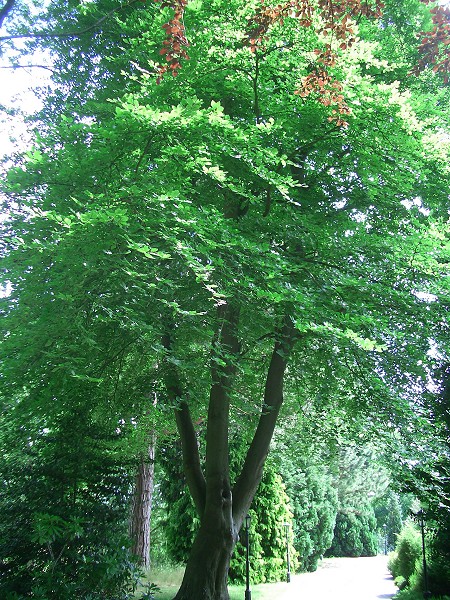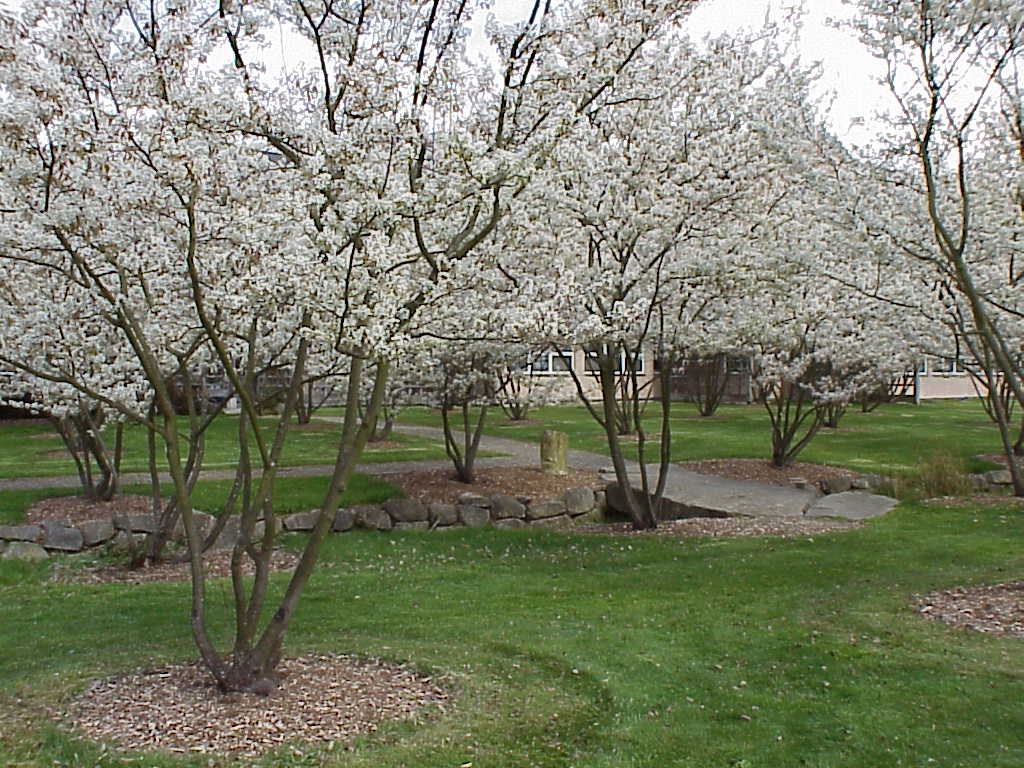 |
| Beech |
Beech Fagus grandifolia Hetre a grandes feuilles
In mythology, the Beech symbolized ancient knowledge or wisdom and the the words beech and book are derived from the same origin, Oe Boc. One of the tastiest nuts of the Northern woods, it was once ground into flour, pressed to make a cooking oil or used to make a coffee-like drink.
Balsam Fir Abies balsamea Sapin baumier
Due its fragrant and soft needles it is well used for wreaths. Various oils are extracted from the needles for their medicinal properties or soothing remedies for sore throats ands coughs. It is the provincial tree of New Brunswick.
Black spruce Picra mariana Epinette nouire
Spruce beer is made by steeping the young shoots and adding molasses, maple syrup, or honey, which is fermented with yeast. This was the drink of the working class and consumed extensively to prevent scurvy for over a century.
 |
| Red spruce |
Red spruce Picea rubens Epinette rouge
It is the preferred tree for collecting and making spruce gum. Try this woodfland novelty by collecting th sap, boiling it until completely dissolved, and pouring it onto a greased cookie sheet. It is the provincial tree of Nova Scotia.
Eastern Hemlock Tsuga canadensis Pruche de l'est
The young needles are steeped in water to make a stimulating and medicinal tea which is high in vitamin C. The pleasant tea was widely brewed by the native people and in lumber camps.
Sugar maple Acer saccharum Erable a sucre
Maple syrup was traditionally made by the Eastern woodland native people, who boiled or froze the sap, leaving behind the delicious syrup and sugar, rich in minerals.
 |
| Serviceberry |
Serviceberry Amelanchier arborea Amelanchier
It was used by native people to make pemmican (dried food made up of meat, berries and nuts). The abundant fruit is delicious when eaten fresh or used in pies, puddings, muffins, jams and jellies. They are blooming now!
Yellow birch Betula alleghasniensis Boulear jaune
It is an aromatic tree, with a strong smell and taste of wintergreen from the buds and twigs. Year round, the twigs can be steeped to make a delicious tea. In spring, it can be tapped and the sap boiled down to make a wintergreen syrup.
 |
| Butternut |
Butternut Juglans Cinerea Noyer cendre
Native people roasted, crushed and boiled the butternuts in water, removing the oil on the surface, which cooled to a butter-like consistency. The trees can be tapped in spring to make a sweet syrup.
Balsam poplar Populus balsamidera Peuplier baumier
The large buds have medicinal qualities. In early spring, the buds can be boiled in oil to make a salve for sprains, swellings, and pulled muscles.
 |
| Largetooth aspen |
Largetooth aspen Populus grandidentata Peuplier a grandes dents
Logs can be used to cultivate a delicious mushroom Pleurotus. Fresh logs are inoculated with the fungus, within 1 or 2 years, edible oyster mushrooms are produced.
Trembling aspen Populus tremuloides Peuplier faux-tremble
Is used to make a flower essence.
 |
| Black cherry |
Black cherry Prunus serotina Crisier tardif
The purple-black fruit is juicy and slightly bitter; it makes great jelly, wine, syrup, or is used in pies and muffins. WARNING: the bark, leaves and seeds are toxic and should be avoided.
Bur oak Quercus macrocarpa Chene a gros fruits
The latin species name for this tree is macrocarpa, meaning large fruit or acorn. Native people collected the edible nuts in the fall, and dried and ground them into a rich, nutritious flour.
 |
| Red oak |
Red oak Quercus rubra Chene rouge
Traditionally, many rural people planted oaks to attract lightening away from their homes. A lovely yellow dye is made from the bark. It is the provincial tree of PEI.
Black willow Salix nigra Saule noir
The native people used the bitter bark to soothe headaches, fevers, arthritis and rheumatism. The bark contains salicin or salicylic acid, which was chemically replicated to make aspirin. The white willow bark is also used medicinally, I use it in the form of a tincture for the same uses.
Common non-native trees
Black locust Robinia pseudoacacia
It can fix nitrogen in the soil, creating a more fertile lawn. It also produces large hanging blossoms that attract honeybees.
 |
| Horse chestnut |
This is a wonderful vascular tonic-I have used it in tincture blends for restless legs syndrome.
 |
| Linden |
Linden Tilia cordata
Littleleaf linden is a common shade and street tree that is widely planted, including in downtown Halifax. The fragrant flowers can be collected in summer, dried and made into an herbal tea. It is excellent for the cardiovascular system, and all can enjoy its resplendent beauty.

Singing Nettles Herbal Clinic by Amanda Dainow is licensed under a Creative Commons Attribution-NonCommercial-NoDerivs 3.0 Unported License.
Based on a work at singingnettles.blogspot.com.
Permissions beyond the scope of this license may be available at http://singingnettles.blogspot.com/.
©ALL TEXT AND IMAGES COPYRIGHT
No comments:
Post a Comment